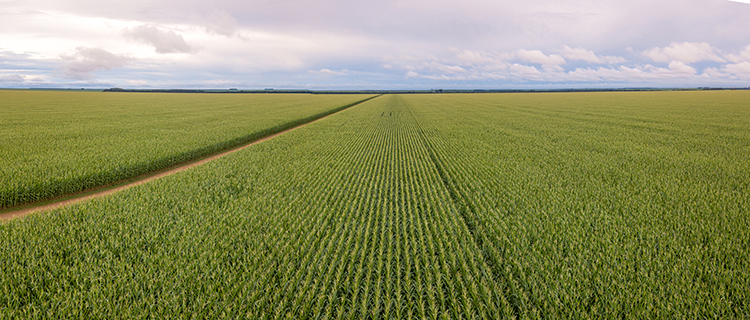
Earlier this year, our research team had the opportunity to attend the International Silage Conference in Gainesville, Fla. This conference has provided an amazing forum for networking and exchanging breakthrough research among silage researchers worldwide since 1970 and is held in a different country every three years.
This column’s objective is to discuss some of the novel silage research presented at this year’s International Silage Conference. These studies were hand-picked to represent different areas within silage research and represent a small portion of the many research trials presented.
An eye in the sky
The adoption of modern technologies has always fueled the advancement of silage production. In recent years, drones have become part of the dairy farmer’s and consultant’s toolbox for safer and more efficient silage inventory via aerial surveillance. With the continuous expansion of artificial intelligence (AI) in agriculture, this technology may offer even more opportunities.
A study from Canada showcased how a drone-based system could not only determine silage inventory more precisely but also detect anomalies like spalling, cracks, and improper sealing of different silo structures. The most fascinating aspect of the study was the detection of spoilage. This technology is still in the early stages, but it could provide more detailed information to farmers, optimize silage storage, and reduce losses.
Another potential drone application is determining optimal harvest time. A study from the Czech Republic evaluated the measurement of dry matter concentration with a drone equipped with a multispectral camera in comparison with portable near-infrared spectroscopy (NIRS) and laboratory oven analysis. Even though the precision was not as good as a laboratory oven, the drone performed comparably or better than portable NIRS and showed potential to provide valuable data for harvest planning.
As this technology continues to evolve, drones may guide improved decision-making as they can efficiently collect more data from multiple sites within and across fields.
Refrigerate inoculants
Many studies evaluated the use of bacterial inoculants for multiple crops and conditions, but one of the main plenary speakers was asked to discuss the future of bacterial silage inoculant formulations. Among the many opportunities highlighted, the need to formulate products capable of improving silage fermentation under extreme environmental conditions — heat and cold — is much needed since keeping inoculants refrigerated during harvest may be challenging. This is also true for the epiphytic (natural) bacterial population.
Our laboratory presented a meta-analysis evaluating the impact of temperature on silage fermentation across multiple silage crops. The most suitable fermentation occurs between 70ºF and 86ºF, but fermentation is impaired when temperatures are below 50ºF or above 104ºF. Environmental temperature influences lactic acid bacteria activity, and if not under optimal conditions, the total acid production is reduced, driving pH higher than desired.
A field study from Mexico evaluated the temperature progression inside inoculant tanks during the summer harvest. It was observed that the lowest temperature (70ºF to 75°F) occurred when tanks were filled. Then, the temperature gradually rose, reaching above 104°F for most tanks. Refilling the tank in the middle of the day helped cool down the water temperature.
So, why should we care about the inoculant tank temperature? Because bacteria strains may have reduced viability or weakened performance under high temperatures.
We conducted a study to evaluate a bacterial inoculant by storing silage at room temperature (72°F) or in a warm room (above 104°F) after sealing. Under room temperature conditions, the inoculant thrived and modulated fermentation as expected, but when the silage was placed in the warm room, the inoculant could not successfully alter fermentation.
Overall, inoculants with better viability under extreme conditions, and with greater tolerance to heat and cold in liquid applicator tanks, will have a major impact on silage production. Perhaps other technologies may surface to aid with this scenario.
Cows don’t lie
Another key discussion during the conference was how unstable silage is less palatable and may limit feed consumption by cattle.
A study from New York evaluated the palatability of corn silage treated with or without an inoculant and defaced immediately prior to feeding or the previous day. Heifers had a greater intake and demonstrated preference for the freshly defaced silage. This response is related to aerobic instability and the proliferation of yeasts and molds. The inoculant helped minimize this scenario but could not overcome poor silage management.
A study from Germany also discussed the different indicators of aerobic instability, including sensory evaluation, heating, and pH value. When aerobic instability is detected, these researchers suggested that the following measures should be taken: seal any unintended openings of the silo, discard visibly deteriorated silage, speed up removal rate, prepare a fresh ration more frequently, and apply stabilizers if needed. This is also the time of year to recap the silage season, identify what went wrong, and plan accordingly to avoid these issues the next year.
This article appeared in the November 2025 issue of Hay & Forage Grower on page 12.
Not a subscriber? Click to get the print magazine.
